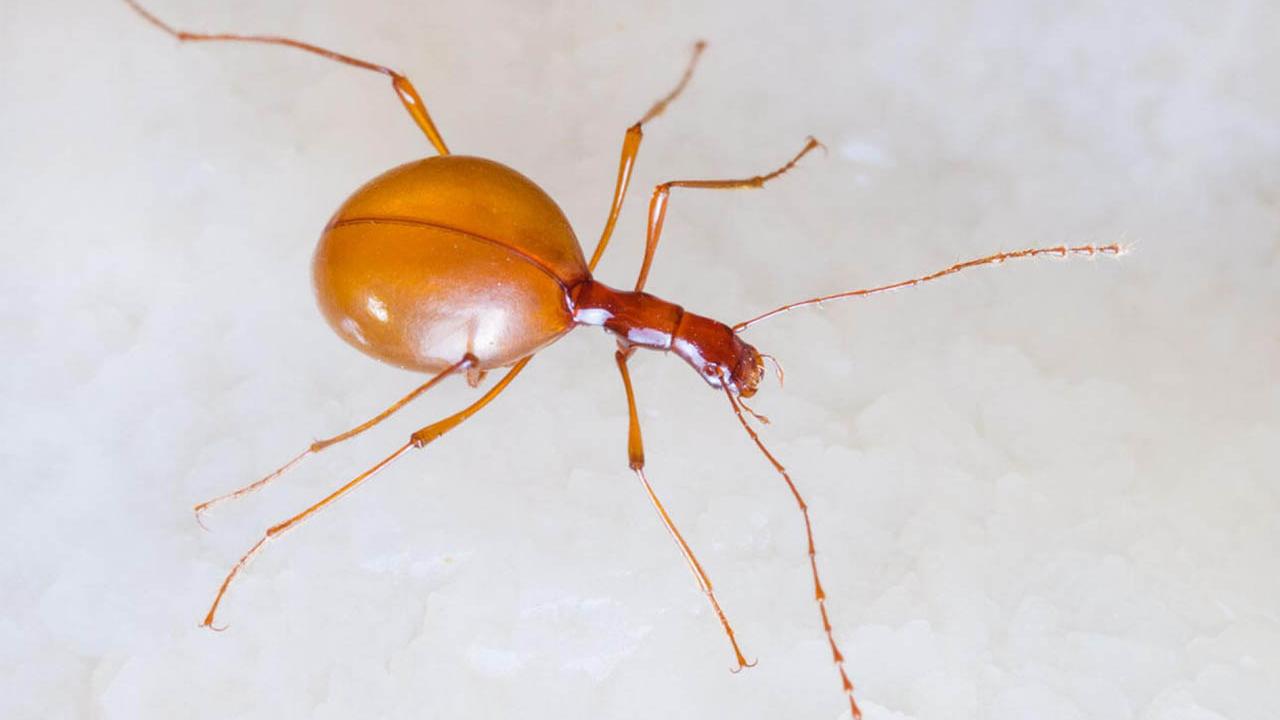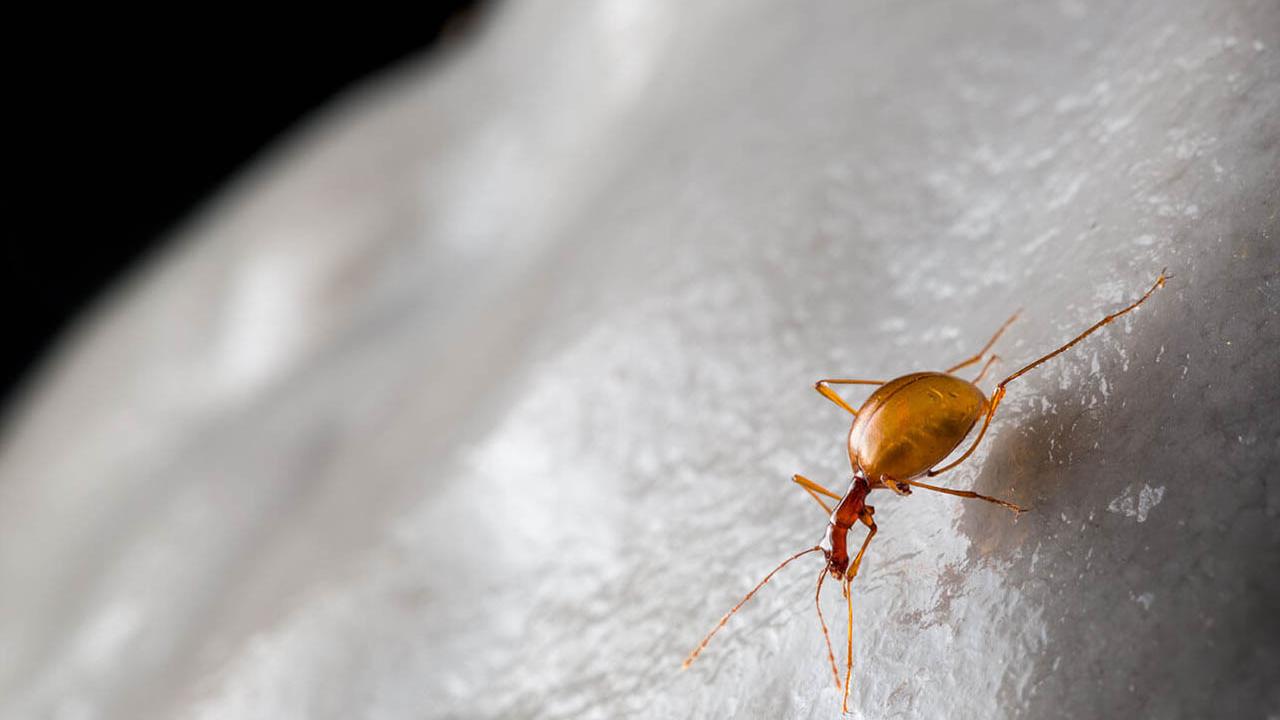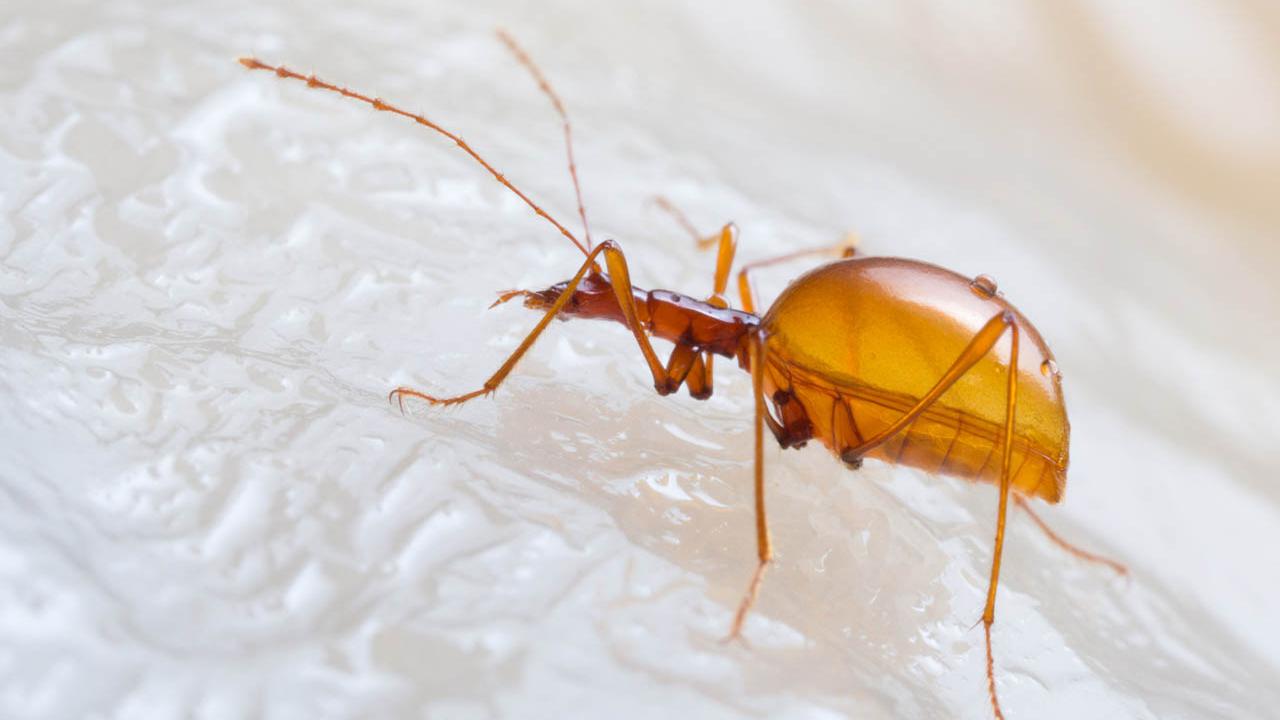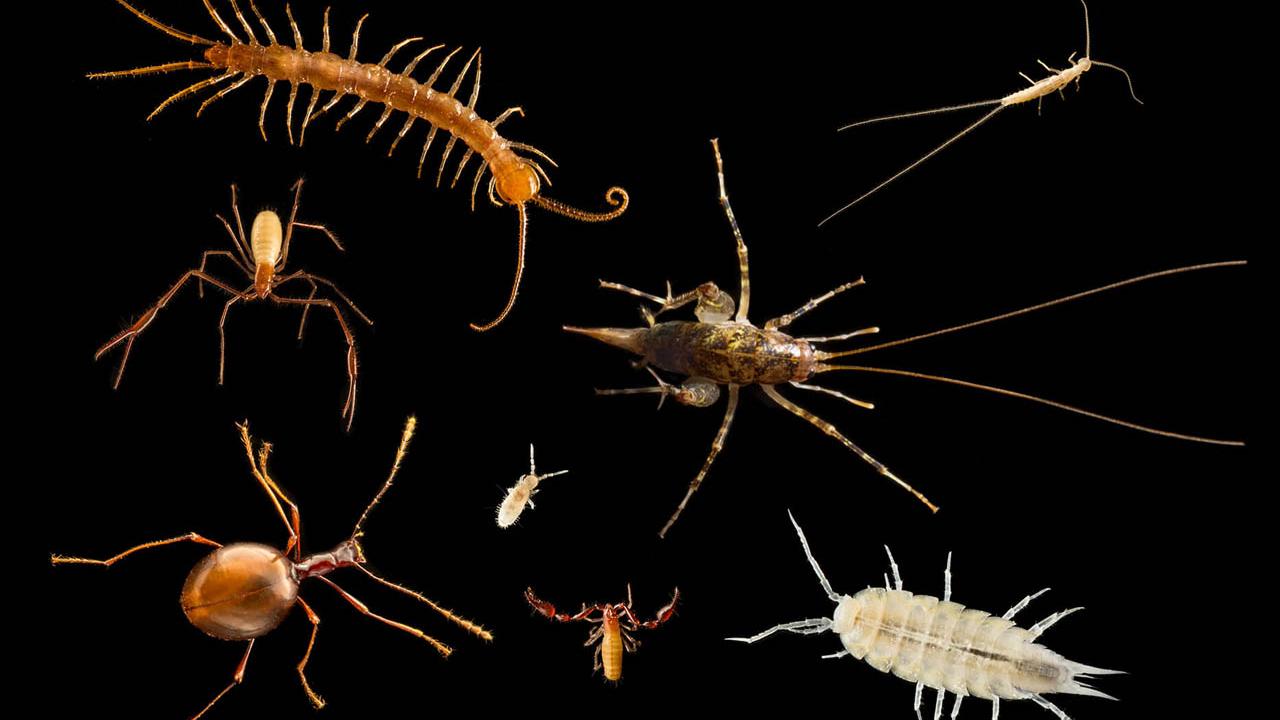Irresistible Curves
A one-of-a-kind discovery in Postojna Cave made scientists change their longstanding beliefs and this is where a new science was born. All this because of a small beetle with a large rear.


A cave beetle
In September 1831, thirteen years after the great discovery of the most beautiful parts of Postojna Cave, Luka Čeč made a new discovery – a small one, but one of great importance.
On a speleothem below the Great Mountain, he found a small brown beetle. He did not know what kind of animal this was, but he did sense it was important. He brought the beetle out of the cave, showing it to Count Franz Josef von Hochenwart, who was in the midst of preparing the first printed Postojna Cave guidebook. Hochenwart made sure the beetle ended in good hands – with Ferdinand Schmidt (a beetle expert), who rolled up his sleeves and set to work.


Life inside a cave
Prior to Luka Čeč's walk around the cave in September 1831, it was believed there was no life inside caves – no animals, no plants. The slenderneck beetle's discovery was evidence to the contrary. A new science was born – biospeleology.
A new species
Schmidt described Čeč's new discovery: its elongated legs and antennae with tiny sensory hairs. He noticed that the animal had no eyes, but a large rear, which looked like some sort of a "shield" – this was actually wings fused together (as there is no need for wings in the cave).


It did not take long for Schmidt to realise this was a true troglobite, a cave-dwelling animal that lives in caves permanently. What he described were the special characteristics of true cave-dwelling animals and their adaptations to the cave environment. The scientific circles were thrilled by the discovery. Schmidt gave the slenderneck beetle its Latin name, Leptodirus hochenwartii. The Latin word Leptrodirus likewise means slender-necked since the beetle's name is based on its interesting body shape – a large rear, a slender neck and thin legs.
On the most wanted list
Since Čeč damaged the beetle on his way out of the cave, it was necessary to find a new one. Schmidt even offered a reward for the person to bring him a new specimen.


He died in 1863 and it took no fewer than sixteen years before another specimen of the slenderneck beetle was found and, during the search for one, scientists discovered other animals and their incredible adaptations to the cave environment. To this date, 150 true cave-dwelling animals have been discovered in Postojna Cave – more than in any other cave, which makes Postojna Cave a subterranean biodiversity hotspot.


 slovenščina
slovenščina Deutsch
Deutsch italiano
italiano Hrvatski
Hrvatski français
français español
español polski
polski čeština
čeština magyar
magyar Русский
Русский Nederlands
Nederlands Português
Português 한국어 [韓國語]
한국어 [韓國語] 中国的
中国的 日本語
日本語 עברית
עברית